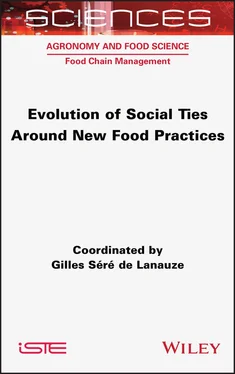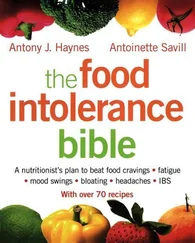1 Cover
2 Title page SCIENCES Agronomy and Food Science , Field Directors – Jack Legrand and Gilles Trystram Food Chain Management , Subject Head – Jean-Marc Ferrandi
3 Copyright First published 2021 in Great Britain and the United States by ISTE Ltd and John Wiley & Sons, Inc. Apart from any fair dealing for the purposes of research or private study, or criticism or review, as permitted under the Copyright, Designs and Patents Act 1988, this publication may only be reproduced, stored or transmitted, in any form or by any means, with the prior permission in writing of the publishers, or in the case of reprographic reproduction in accordance with the terms and licenses issued by the CLA. Enquiries concerning reproduction outside these terms should be sent to the publishers at the undermentioned address: ISTE Ltd 27-37 St George’s Road London SW19 4EU UK www.iste.co.uk John Wiley & Sons, Inc. 111 River Street Hoboken, NJ 07030 USA www.wiley.com © ISTE Ltd 2021 The rights of Gilles Séré de Lanauze to be identified as the author of this work have been asserted by him in accordance with the Copyright, Designs and Patents Act 1988. Library of Congress Control Number: 2021943145 British Library Cataloguing-in-Publication Data A CIP record for this book is available from the British Library ISBN 978-1-78945-044-6 ERC code: LS9 Applied Life Sciences, Biotechnology, and Molecular and Biosystems Engineering LS9_5 Food sciences (including food technology, food safety, nutrition)
4 Foreword
5 Acknowledgments
6 Author Biographies
7 Introduction Eating Together, What Are We Talking About? Social Evolution of Today’s Food…
8 1 Eating Together, a PNNS Recommendation. How Can it be Put Into Practice?
1.1. Introduction 1.2. Eating together, a recommendation of the National Nutrition and Health Plan 1.3. Understanding the emergence and maintenance of eating together 1.4. Eating together: materials, meanings and skills 1.5. Interactions between materials, meanings and skills: particular practices or means of overcoming constraints 1.6. Does eating together always promote well-being? 1.7. What are the perspectives for promoting eating together? 1.8. Appendix: Sample summary 1.9. References
9 2 “Eating Together” Through the Internet: The Case of Online Weight Loss Support Communities 2.1. Introduction 2.2. Online weight loss support communities 2.3. Exchanges in these communities: informational as well as emotional social support 2.4. Social influence within online weight loss support communities 2.5. A hybrid research methodology 2.6. Analysis of the results 2.7. Conclusion 2.8. Appendices 2.9. References
10 3 “Eating Together”: With or Without the Dietary Constraints of Others? 3.1. Introduction 3.2. Dietary constraints, whether endured or chosen 3.3. Suffering from dietary constraints but eating with others: the case of meals between sick and healthy people 3.4. Having dietary constraints out of conviction: How do you eat with others? 3.5. Conclusion 3.6. Appendix: Characteristics of the Study 2 sample 3.7. References
11 4 Eating Together, Yes, But Without Meat! Social Influences Related to Vegetarianism and Veganism 4.1. Introduction 4.2. Not eating meat! 4.3. Relationships between vegetarians and non-vegetarians 4.4. Opposition between society and community, the normative dissonance 4.5. Conclusion 4.6. References
12 5 Eating Together and Differently: Halal Between Standardization and Segmentation 5.1. The halal meat market: eating together or differently? 5.2. Producing together AND differently: actors, complexity and differentiation: segments within the segment 5.3. Consuming together and differently: credibility, trust and differentiation: more segments within segments 5.4. Conclusion: the halal meat market in France: eating together and differently 5.5. Appendices 5.6. References
13 6 From “Eating Together” to “Living Together Better”, the Case of Local Products 6.1. Introduction 6.2. Eating locally in a global context 6.3. Eating locally: from local conviviality to globalized connectivity 6.4. Conclusion 6.5. Appendices 6.6. References
14 7 By Way of an Epilogue: “Eating Together” in the Time of Covid-19 7.1. Introduction 7.2. The change in practices 7.3. Irruption and trivialization of the digital in food and conviviality 7.4. Strengthening communities and beliefs? 7.5. A refocusing on the local and nearby 7.6. What are the possible scenarios?
15 Conclusion
16 List of Authors
17 Index
18 End User License Agreement
1 Chapter 2Table 2.1. The nature of advice exchanged in online communities (Gallin et al. 2...
2 Chapter 3Table 3.1. Participants in Study 1
3 Chapter 4Table 4.1. Glossary of practicesTable 4.2. Types and expected roles of communities
4 Chapter 5Table 5.1. Summary of the three HGSsTable 5.2. Halal products and meat purchase behavior (source: elaborated by the ...Table 5.3. Halal meat consumption behaviors (source: elaborated by the authors –...Table 5.4. Significance of halal and selection of place of purchase (source: ela...Table 5.5. Halal certification and brand awareness (source: elaborated by the au... Table 5.6. Characterization of the halal market and halal meat (Nielsen 2019 and...Table 5.7. Main halal brands in France (source: data collection from specialized...Table 5.8. Consumption patterns of Muslim households in FranceTable 5.9. Consumer perception, satisfaction with halal offer and brand awarenes...Table 5.10. Slaughter and certification of halal meat in FranceTable 5.11. Characteristics of the questionnaire survey sample
5 Chapter 6Table 6.1. Motivations to consume local products in favor of the territories and...Table 6.2. French consumers’ distrust of food products (source: Opinion Way for ...Table 6.3. Importance of origin and transparency in French consumers eating loca...Table 6.4. Results of the factorial analysis of the perceived terroir image of p...Table 6.5. Reliability and validity of the perceived value and confidence scalesTable 6.6. Validation of the effect of terroir/local image on trustTable 6.7. Validation of the perceived value effect on brand confidenceTable 6.8. Characteristics related to territorial anchoringTable 6.9. Selected facets and dimensions of consumption value and dietary well-...Table 6.10. Validation of the links between IMAGT and PCV by structural analysesTable 6.11. Examples of applications to eat healthy, local and seasonal food in ...Table 6.12. Presentation of the qualitative fieldworkTable 6.13. Scales for measuring constructsTable 6.14. Socio-demographic structure of the sample groups
1 Chapter 1 Figure 1.1. Diagram of the conceptual framework from Shove et al. (2012), as pre... Figure 1.2. Example of a projective collage (Paola). For a color version of this... Figure 1.3. Summary of the components involved in the implementation of eating t...
2 Chapter 2Figure 2.1. A search for advice in a weight loss support Facebook group 3Figure 2.2. A “summary” related to weight loss in a weight loss support Facebook...Figure 2.3. A diet-related “summary” in a weight loss support Facebook group. Fo...Figure 2.4. Seeking informational support in a weight loss support Facebook grou...Figure 2.5. Another example of seeking informational support in a weight loss su...Figure 2.6. Another example of seeking informational support in a weight loss su...Figure 2.7. The provision of spontaneous informational support in a weight loss ...Figure 2.8. The provision of spontaneous sport-related informational support in ...Figure 2.9. Seeking and providing emotional support in a weight loss support Fac...Figure 2.10. Seeking emotional support in a weight loss support Facebook group: ...Figure 2.11. Seeking both informational and emotional support in a weight loss s...Figure 2.12. Sharing a rough recipe in a weight loss support Facebook groupFigure 2.13. Sharing a specific recipe in a weight loss support Facebook group. ...Figure 2.14. A request for a yogurt recipe in a weight loss support Facebook gro...Figure 2.15. An example of normative influence in a weight loss support Facebook...Figure 2.16. An example of informational influence in a weight loss support Face...Figure 2.17. A publication that triggers a request for informationFigure 2.18. A member’s thank you for the support received on the group. For a c...
Читать дальше












